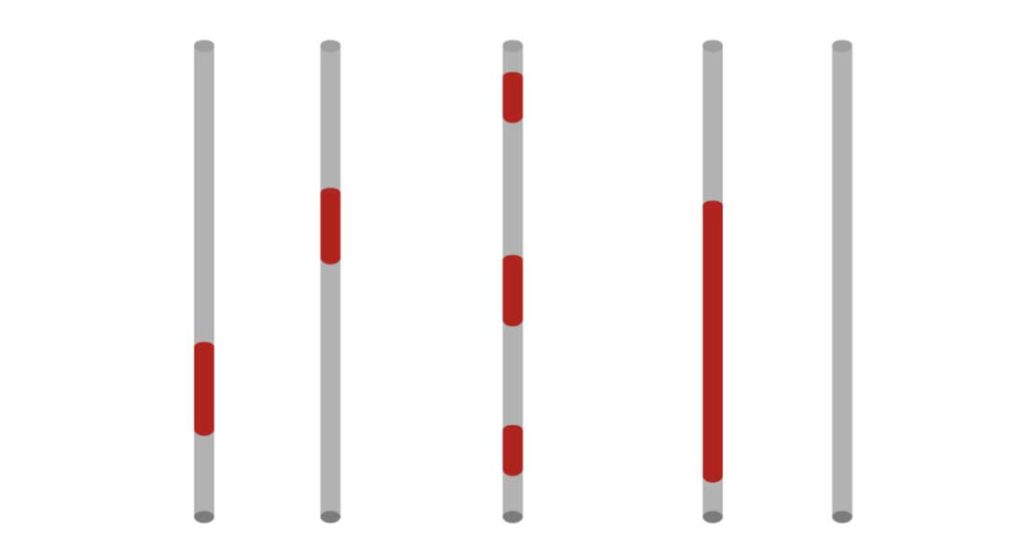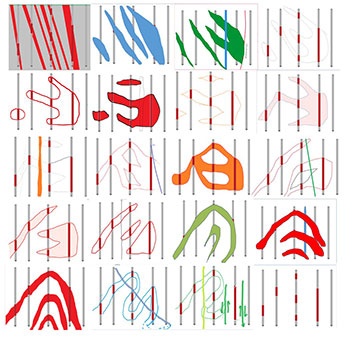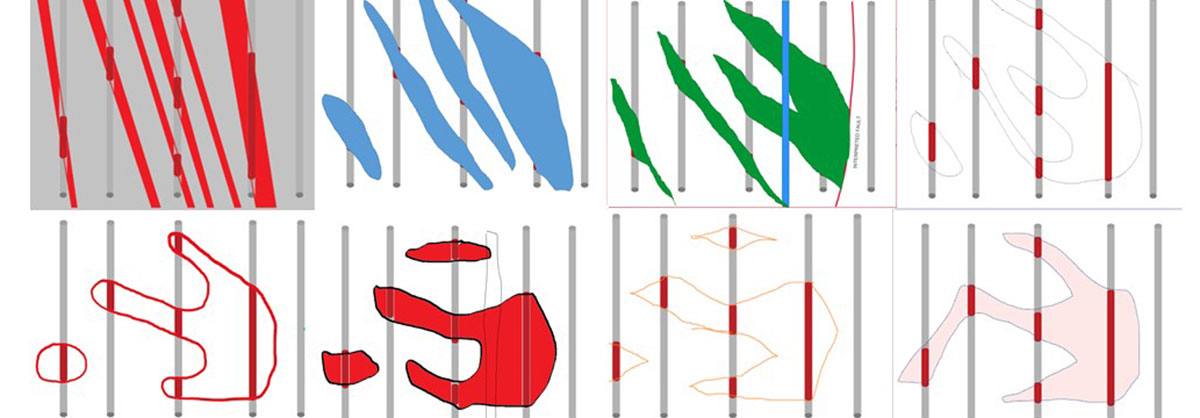September 2022 Issue Index
Alternative geological interpretations
Maptek DomainMCF provides a data-driven process to generate alternative models to satisfy JORC reporting standards.
Maptek presented a case history on generating alternative geological interpretations from a fixed set of sample data to the 3rd AEGC conference in Brisbane in late 2021.
A simple, theoretical dataset was prepared as shown in Figure 1. The challenge was to interpret the potential geological correlation of the red intervals in the drillholes provided on a single traverse.
This interpretation challenge was completed by more than 100 geologists and resulted in 20 different interpretations (Figure 2):
This case history shows that it is possible – from a fixed set of data – to generate many alternative interpretations. Additionally, all interpretations in the study are equally geologically valid.
Geological interpretation is subject to personal decisions by the practising geologist on how particular pieces of observational data are linked in three dimensions.
Analysing the outcome of the interpretation exercise, which was expected but not to the degree manifested, leads to the conclusion that the interpretations being made are potentially a reflection on personal geological experience.


If the interpreter has spent a lot of time working in narrow vein deposits, the mineralised intercepts will be easily joined to reflect that natural bias. A geologist highly experienced in systems with folds, may intuitively choose that route to interpret the cross section.
Recognition of personal experience and bias is important. Independent review of interpretations by peers and third parties is essential, especially when working on new projects, where open cut or underground exposures do not yet exist to substantiate the geological model.
The reporting guidelines for the Estimation and Reporting of Mineral Resources, as set out in the 2012 JORC Code by the Joint Ore Reserves Committee, includes a requirement for the Competent Person to make statements on the effect of alternative geological interpretations on the mineral resource.
A completely independent geological assessment is seldom commissioned when generating a resource report.
A review of recent ore resource reports to the ASX showed that very few mentioned consideration of alternative interpretations. Often the reports ignored this reporting requirement. If mentioned, a common statement was along the lines of ‘The current geological interpretation is considered robust’.
Alternative interpretations are not sought mostly because of the time and cost involved. In more recent times, the lack of geological staff to perform alternative studies is a consideration.
Introducing DomainMCF to your reporting process provides you with a second or alternative geological opinion, which is not only fast, it is significantly more cost effective than any other method.
Most deposits can be modelled using the DomainMCF machine learning engine in less than an hour and the outcomes are so geologically valid that they surprise even the most experienced resource geologist.
DomainMCF provides a data-driven process to generate an alternative model to satisfy the 2012 JORC Code reporting standard. At the same time it provides interpretations which truly represent the input data, freeing up the overstretched geological staff for working on data quality, data collection and analysis.
- Personal geological bias is more pervasive than geologists like to admit
- Few ore reserve reports consider alternative interpretations to meet JORC reporting guidelines, often due to lack of staff and time
- DomainMCF cost-effectively provides a range of geologically valid models in a short time

